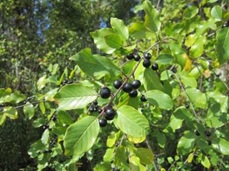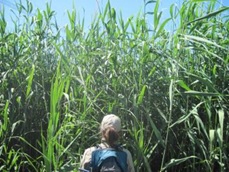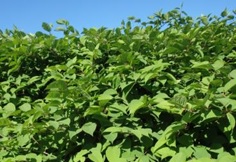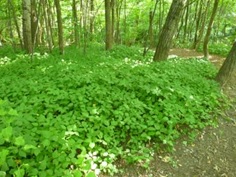| Environmental Columns
Exotic Invasive Plant Species: Unwelcome Visitors to Terra-Cotta Natural Park
Exotic invasive plant species (EIPS) are plants that have been introduced to different natural environments than their native habitat. With their high level of adaptability, impressive growth rate, effective reproduction capabilities and a lack of natural predators, these visitors have an advantage over indigenous species.
In addition to uprooting and reducing populations of indigenous species, these invaders change the way ecosystems function, modify the habitats to which they are introduced, and can also be a source of disease for existing species. Globally, exotic invasive plants are the second greatest cause of loss of biodiversity, after the destruction and degradation of natural habitats.
Inventories conducted in Terra-Cotta Natural Park identified the presence of 5 EIPS:
Alder Buckthorn (Frangula alnus) and Common Buckthorn (Rhamnus cathartica)
These are the two species that are most abundant in Terra-Cotta Natural Park and form dense colonies over vast swaths of the Park. These two shrubs, which can reach a height of seven metres, are easily identifiable by their berries that become black when ripe. The City and its partners are currently making efforts to combat and contain this threatening species.

Alder Buckthorn © Nature-Action Québec
Common Reed (Phragmites australis)
Present mostly in areas of the Park where the vegetation has been heavily modified by humans, this tall grass can reach five metres in height and grow 30 centimetres per week because of its highly developed root system.

Common Reed © Nature-Action Québec
Japanese Knotweed (Reynoutria japonica)
This herbaceous plant deprives other plant species of light by forming dense masses that can reach up to four metres in height. Its stem, which is hollow, round and spotted with red, makes it look like bamboo.

Japanese Knotweed © Nature-Action Québec
Ground Elder (Aegopodium podagraria)
This small herbaceous plant, often used horticulturally for its white flowers, has escaped from gardens to invade natural environments. With its rapidly spreading root system, it forms vast colonies on the ground.

Ground Elder © Nature-Action Québec
The City and its partner Nature-Action Québec, with the financial support of CN EcoConnexions-From the Ground Up, has carried out a number of interventions in 2016 to limit the presence of exotic invasive plant species in Terra-Cotta Natural Park. With the goal of preserving the Park, several colonies of buckthorn were removed from the woods and replaced with indigenous species. By the end of the project in 2017, 2,400 trees and shrubs will have been planted to combat buckthorn.

